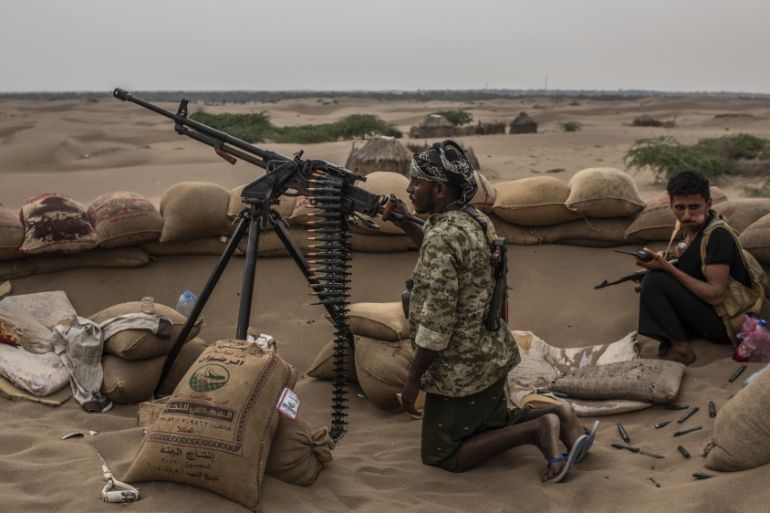Flashpoint city of Hodeidah ‘most dangerous place in Yemen’
Aid groups say 799 civilians killed and wounded in Hodeidah province in 2019, the ‘highest toll’ in war-torn country.

Yemen‘s flashpoint city of Hodeidah continues to be the war-ravaged country’s most dangerous place, more than a dozen international aid groups have warned, despite the signing of a peace agreement last year that aimed to alleviate people’s suffering.
In a joint statement on Thursday, 15 international aid groups said 799 civilians were killed and wounded in the city and the surrounding province since the United Nations-brokered ceasefire agreement was signed in Stockholm, Sweden, in December 2018.
Keep reading
list of 3 itemsRed Cross: Yemen faces new outbreak of dengue fever
Are curbed air raids a sign of an ending Yemen conflict?
This is “the highest toll countrywide,” the statement said, without providing a breakdown for the toll.
“As aid agencies working in Yemen, we are outraged that after almost five years, Yemenis continue to suffer from an incalculable humanitarian crisis fuelled by conflict,” the agencies, including Oxfam and the Norwegian Refugee Council, said.
“Civilians continue to bear the brunt of the violence,” their statement added. “Houses, farms, markets and health facilities are damaged and destroyed, worsening an already dire humanitarian situation.”
The conflict in Yemen began with the 2014 takeover of the capital, Sanaa, by Houthi rebels, who also seized control of much of the country’s north.
In March 2015, a Saudi-UAE-led military coalition intervened to restore the internationally-recognised government of President Abd-Rabbu Mansour Hadi, who was forced out by the Houthis.
Since then, tens of thousands of people have been killed, most of them civilians, according to relief organisations. The devastating conflict has also pushed millions to the brink of famine, in what the United Nations calls the worst humanitarian crisis in the world.
The Stockholm agreement included a ceasefire for Hodeidah and an exchange of more than 15,000 prisoners. But the deal was never fully implemented.
“Families continue to flee for their lives, with close to 390,000 Yemenis uprooted from their homes across the country so far in 2019,” the aid groups said, highlighting that along with Hodeidah, the provinces of Taiz, Dhale and Hajjah top the most dangerous list.
The statement said that though the overall death toll, with 1,008 civilians killed by armed violence so far this year across all of Yemen, was down from the 2,049 killed last year, the country is still the world’s biggest humanitarian crisis. Ten million people face starvation and seven million are malnourished, it added.
“If urgent action is not taken we could see another five years of conflict, leading to a greater catastrophe for civilians,” the groups said.
Aden clashes
Clashes in August between forces loyal to Hadi and UAE-backed southern secessionists – known as the Southern Transitional Council (STC) – risked opening a new front in Yemen’s multi-layered conflict.
Saudi Arabia was able to bridge the divide between the nominal allies, bringing them together in November for a meeting during which the two warring sides signed a peace agreement.
Human Rights Watch (HRW), however, criticised the agreement, saying it failed “to address serious human rights abuses”.
HRW said in the months before the deal was reached, STC forces arbitrarily detained or forcibly made disappear at least 40 people in the southern province of Aden, 15 of who were released in September.
STC and the government should immediately free those still detained, compensate the victims and appropriately punish officials who carried out or oversaw these abuses, HRW said. STC has denied the allegations.